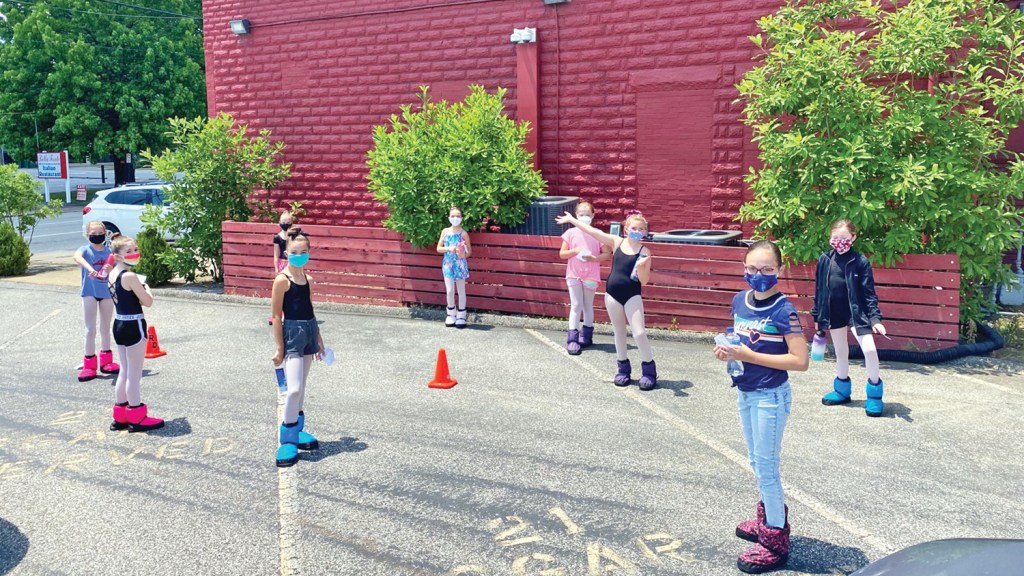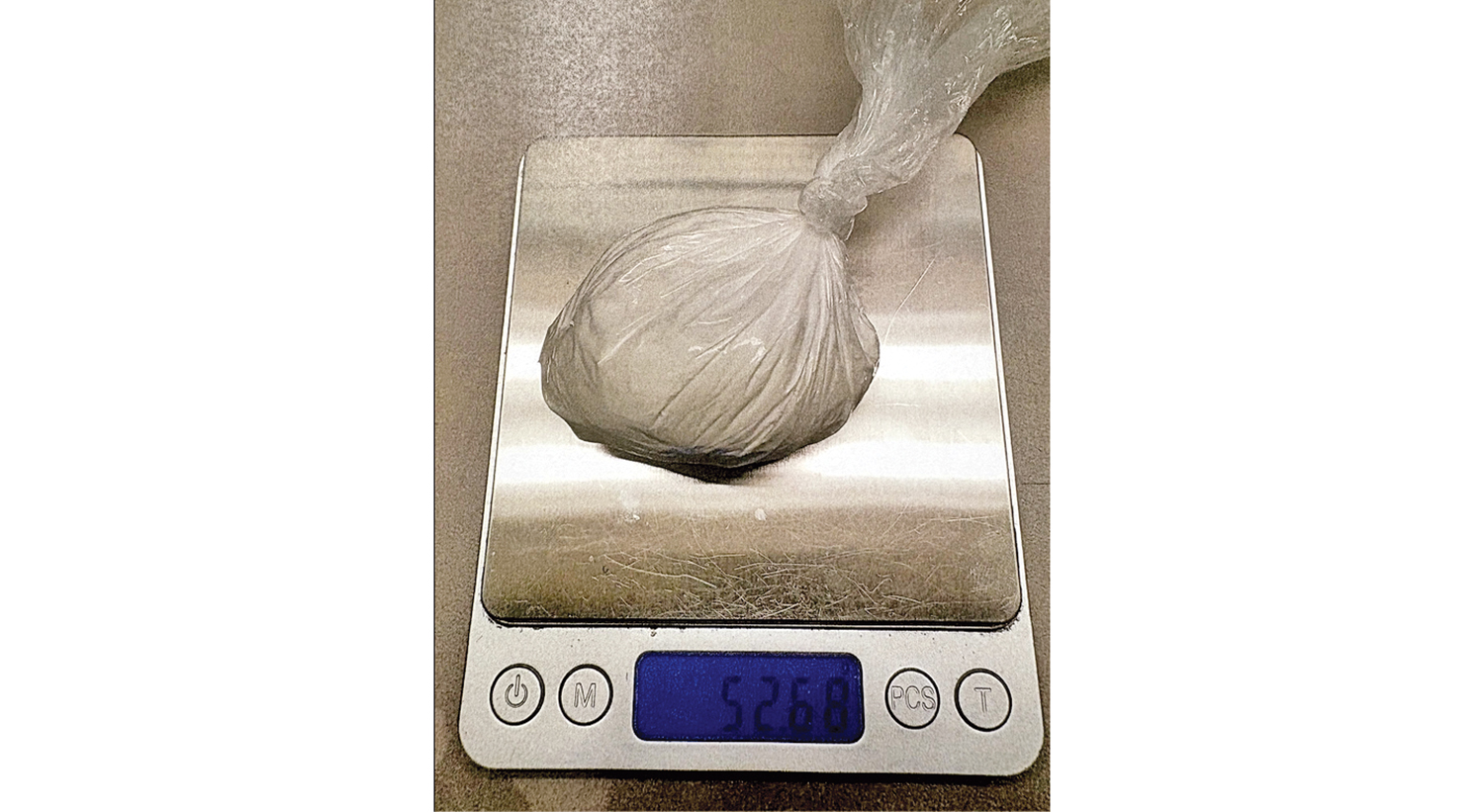The show must go on: How the arts throughout the Tri-State have preserved throughout the pandemic
Published 12:43 am Wednesday, July 29, 2020

- Dancers wait outside to be checked in from class at the Ashland Youth Ballet. (Submitted photo)

“Young Prophet / Old King,” and acrylic on paper study by Robert Hutton, is one of the pieces the artist and co-owner of the Hutton Wayfarer Gallery has created while the business has been closed during the COVID-19 pandemic. (Submitted photo)
By Taylor Burnette
The Ironton Tribune
It is often said that art is life and life is art, but when life in the Tri-State came to a halt because of the COVID-19 pandemic, the artists and arts establishments around the region found themselves stuck between adapting or closing down.
For Maria Whaley, the owner and director of the Ashland Regional Dance Theatre and Ashland Youth Ballet, the pandemic proved not only challenging for her studio, but for opportunities she is usually able to provide her dancers.
“Mid-March, everything just kind of came to a standstill and we could not have in-person classes or rehearsals,” Whaley said.
“We had a show upcoming as well. … I mean immediately, like the rest of the world, it put us into ‘Okay, how do we function?’”
The Ashland Youth Ballet offers dance experience to local dancers of all ages, ranging from a senior company down to a junior petite division, who typically play the mice in the yearly production of The Nutcracker. Additionally, the company performs another show, that varies year to year, each spring.
When schools and businesses shut down at the beginning of the pandemic, Whaley said that they quickly adapted their classes to an online format. At first releasing videos for dancers to watch, they then moved to a live format over Zoom, which had its own set of challenges, Whaley said.
“We often fight for the same hours in the evening that children take piano lessons or violin lessons,” Whaley said. “Those same hours that they need, that music teachers, and vocal music teachers, and karate teachers or tennis coaches might need, we need those as well.”
Whaley said they were able to resume activity three weeks ago, with added caution. They went on the basis of “healthy dancer passes,” a promise by a parent that the student is showing no symptoms, and temperatures taken and recorded at every class.
Whaley’s studio is now open, although at half capacity. The staff cleans between each class, and dancers remove their shoes and outwear in the waiting room to avoid contaminating the studio.
“It’s not hard, it’s just getting into a new routine,” Whaley said. “It takes a little bit longer with what we’ve got, especially with the little ones.”
Although there are many challenges to overcome, Whaley said she has seen incredible growth in her dancers because of their practice during the pandemic.
“We were fearful that their stamina was low, their strength was low, and their flexibility had of been threatened,” Whaley said. “We were really concerned about where they were physically. … Within two to three weeks, I’ve seen a significant increase. … One of the challenges on Zoom was always to see their alignment and making sure everything was okay, so we all decided to teach from the fundamentals. Once they came back into the studio, some of them have made extreme progress, because they’ve been focusing on those fundamentals. … That’s been a blessing.”
The Ashland Youth Ballet’s spring production was interrupted by the pandemic, and right now, Whaley said, they are committed to putting together that show, beginning the intensive process that will coincide with their regular fall classes.
Despite this, they do not how their show will be performed, and if it will be opened to an audience.
Other places teaching the arts have also struggled because of the pandemic.
John Malone, the owner of Malone Karate, which teaches an array of Martial Arts, said that he was able to finally open back up on June 1 after teaching only over Zoom for almost three months.
“I did lose some of my students that have not started back since it all opened up, some have underlying health issues that they’re still leery about. And then others are just leery about being out and in contact with a lot of people.” Malone said.
Malone said that he has had trouble getting some of the emergency small business loans offered in COVID-19 relief funds and that his business’ finances have been especially strained.
Zoom classes proved difficult because of the lack of technological access many of his students had, Malone said. Coming back into the studio, though, has posed its own problems and restrictions.
“Whenever people come in, I’ve got a hand gel,” Malone said. “We hand gel coming into the studio, then hand gel when they leave the studio. Pads and bags that are used during classes are wiped down in between each class, basically after each use. There’s been extra cleaning precautions that have been taken as far as the mat area.”
Additionally, the waiting area in the studio is closed, but Malone provides a livestream for parents to watch in their car.
Malone has given the choice of wearing a mask to his students, but is not extremely particular on one stance because of the physical nature of martial arts, he said. He has also used symptom assessment, and required anyone who has been in contact with someone with COVID-19 to stay home for two weeks.
“We’ve always had in place: if you’re sick, you don’t feel good, stay home,” Malone said.
For Malone, the pandemic has showcased the hard work and dedication he has worked to instill in his students, with many practicing and persevering through the pandemic.

“Dispute,” and acrylic on canvas piece by Robert Hutton, is one of the pieces the artist and co-owner of the Hutton Wayfarer Gallery has created while the business has been closed during the COVID-19 pandemic. (Submitted photo)
Many artists work in solitude, like Robert Hutton, who owns the Hutton Wayfarer Gallery along with his wife, Robin. The pandemic has still had an effect on how their work is shared.
“My work has not been seen or sold during the pandemic,” Robert said.
The gallery, located on their remote South Point property along with Robert’s art studio, has been closed since the beginning of the pandemic. Robin, the director of the art studio, said that they have been unable to open back up yet, with no date for reopening currently in sight.
The closing of the gallery has not stopped Robert’s creative process, however.
“As a young artist, I used to strive to have exhibitions, representation in commercial galleries and international, regional and local art competitions,” Robert said. “I am open to those opportunities when they arise, but these are less important to me lately.”
Robert has continued to work for six hours everyday, stopping in the evening and often watching the 6:30 news. The events going on in the world have impacted his work, Robert said.
“There’s probably an undercurrent of stress,” Robert said. “Some of the things that I did relate to current issues that you hear on TV and the news, and probably some of the anxiety from the pandemic is also there.”
Robert said that he has been praying for “divine inspiration,” something a bit more literal in the case of his recent work, acrylic paints featuring an array of vibrant colors and thick brush strokes, that are inspired by the Bible. An example is his painting “Sisters,” inspired by the biblical story of Martha and Mary.
Although the pandemic has not stopped Robert’s creation, Robin said it has stopped some upcoming events.
“We no longer promote in-person visits; we had to postpone our March 2020 guest artist exhibition by Mark Tobin Moore, as well as his exhibition opening, reception and artist talk,” Robin said.
In light of the gallery being closed, Robert’s work will soon be available online for purchase, and others wishing to view his pieces may be able to do so on the gallery’s Facebook page.
The gallery has no plans to open until there is a vaccine available and the pandemic ends, Robin said, because of her and her husband’s age and health risks.






